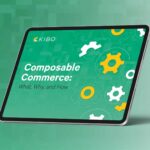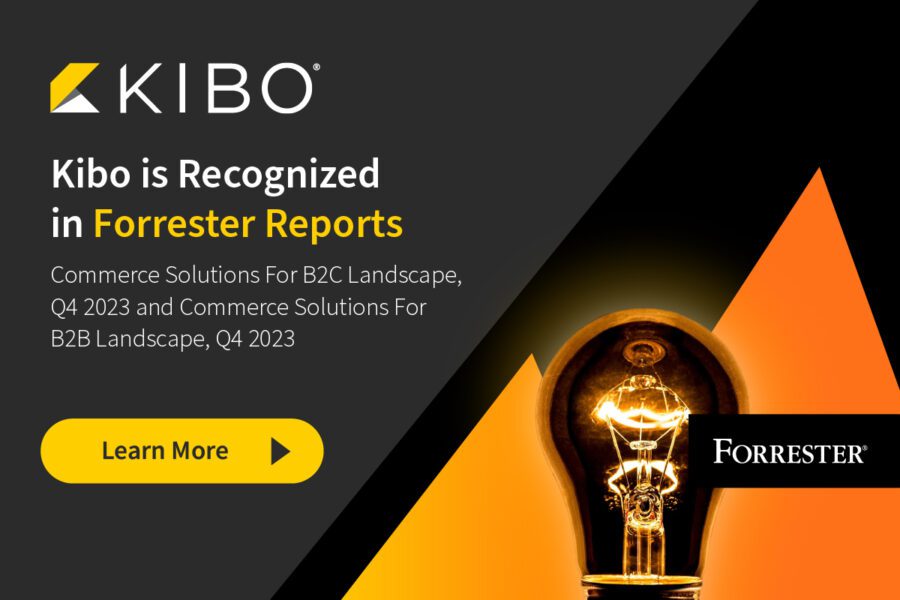Composable commerce is more than a type of technology architecture or ecosystem. It’s a business strategy that requires a shift in how companies implement, manage, and use their digital commerce systems.
(If you’re wondering, “What is composable commerce?” read this article.)
In the current state of rapidly changing consumer behaviors, composability gives brands and retailers the agility to keep pace with those changes without completely overhauling their technology ecosystems. In addition to the business benefits of composability, it also enables an optimal customer experience.
In this article, we’ll outline these benefits and why now’s the time to consider a composable commerce strategy.
The Business Benefits of Composable Commerce
Composability allows retailers to be agile and flexible. By building your platform from capabilities that you need, you save on the total cost of ownership (TCO). You’re also not tied to a specific vendor since you can mix and-match capabilities from different providers.
Freedom from the monolith:
Gartner notes that all digital experiences will eventually be built in a composable fashion. Monolithic platforms simply cannot keep pace with the speed of change and are becoming a liability for companies who want to be agile. Even headless systems don’t offer the flexibility of composable because headless essentially gives you two monoliths – one at the frontend and one at the backend.
An open ecosystem:
In a composable ecosystem, the best solution wins—not the one that’s proprietary to a specific vendor. This leads to more innovation and better solutions for customers. An open system means you’re not locked into a specific vendor, framework, or programming language. It gives your developers and business users more choice and flexibility when it comes to the technologies you use.
Total cost of ownership:
Composable systems provide a lower TCO because you only pay for the capabilities you need. PBCs allow you to cherry-pick capabilities from formerly monolithic systems and connect them to your commerce platform. So, instead of connecting the entire ERP and CRM to the commerce platform, you can use PBCs to integrate the pieces of each tool in a way that works for your business.
Performance and agility:
Composable systems are inherently pluggable and flexible, allowing you to quickly adapt to market changes and customer needs. They’re also highly scalable, so you can start small and build/optimize the system using PBCs tied to business goals.
Composable Commerce Creates a Better Customer Experience
Composable systems are designed to be customer-centric but also business-centric. These are two important elements of managing the entirety of a customer’s digital experience.
A composable system allows you to align IT functions with business functions by connecting the capabilities that matter most to your customers. In a composable system, individual capabilities can be added, removed, or changed without affecting the rest of the system. This gives you the agility to respond to customer needs in real-time and create exceptional digital experiences that drive conversions and loyalty.
CX-focused use cases for composable commerce:
- Add new commerce touchpoints to your stack: Easily incorporate new service or commerce-based features like a chatbot or voice-activated assistant.
- Create a new customer profile: Add a new customer profile type, such as B2B or B2C, to expand your reach without making changes to the underlying code.
- Build a loyalty program: Launch a loyalty program with features like points, rewards, and status tiers.
- Scale order management capabilities: Composable order management lets you connect to new sales channels, partners, and marketplaces. You can also offer more fulfillment options like in-store pickup, curbside delivery, and drop shipping.
But composability also equips business users with low-code and no-code solutions that allow them to make changes that enhance the customer experience without involving IT. Business users can make these changes without affecting the stability of the system—and without needing technical expertise.
Composable systems are also designed to be interoperable, so they can easily connect with the tools and technologies that support your business goals. This includes things like ERP, CRM, marketing automation, and analytics tools. Interoperability gives you a complete view of the customer journey, so you can rapidly identify and address pain points.
Composability Fosters Cross-Organizational Relationships
Moving to a composable framework isn’t just about the technology. It requires a whole-business mindset since all teams and departments are impacted by how you develop, implement, and use your commerce system.
Composability demands (and fosters) next-level team collaboration—what Gartner calls “fusion teams” to ensure successful development and implementation.
Instead of thinking about the technology, fusion teams shift their focus on how larger components work together to drive business initiatives. This can be a challenge, but it’s essential for making the switch from monolith to true composability.
Business Goals Achievable with Composable Commerce
Composable systems allow you to commoditize your commerce capabilities, integrating them with analytics, content, search, order management, and more. By orchestrating and integrating the moving parts needed to support and facilitate the customer journey, businesses can achieve the following:
- Improved customer experience and engagement
- Increased agility and responsiveness to market changes
- Lower total cost of ownership
- Enhanced scalability and performance
- Improved business efficiency
- Increased customer loyalty
- More seamless integration of features and technologies
- Enhanced compliance and better security
- Improved team collaboration
Kibo’s Approach to Composable Commerce
Kibo’s composable commerce platform is based on a microservices architecture, so each capability can be deployed and scaled independently. This allows us to offer a true SaaS solution that can be quickly implemented and easily upgraded without the need for extensive IT resources.
Our modular approach also means that you can start with the capabilities you need today and add more as your business grows. Each capability is packaged as a self-contained unit, so you can easily add or remove functionality without affecting the rest of the system, such as cart and checkout, order management, or subscriptions management.
Our platform is designed to be highly interoperable. It seamlessly integrates existing commerce systems and platforms. We also offer pre-built connectors for popular ERP, OMS, and POS systems.
Finally, Kibo’s platform is designed to be business-centric, so you can manage your commerce operations from a single system. This approach provides a consistent view of customer data and inventory across all channels, allowing you to align your technology ecosystem with your business goals.
To learn more about how composable commerce can benefit your business, request a Kibo demo today.

Composable Commerce: What, Why, and How




